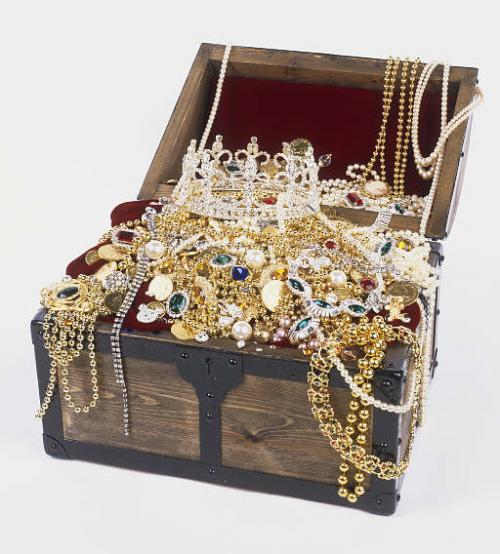How to hide your valuable assets and possessions
Hiding your life's treasures under a pillow or mattress won't safeguard them from a thief. However, this doesn't mean that a safety deposit box at your bank is the only place for them. The following ideas of where to locate a secret compartment will offer maximum security. Some of these ideas require some construction to the house, so are better for people who own their own homes. The remaining ones can be effectively used by apartment dwellers or renters. All of them can be used to hide your valuable assets and possessions.

Things you’ll need
- basic hardware tools
- various types of screws and nails
- small hand-held electric jig saw or “sawzall”
- basic finishing and woodworking tools
- carpenter’s glue
- wood stains
- various enamel paints
- planting pot
- electric socket plates

Procedure Steps
- Because walls are hollow, there can be hidden space behind every wall in every room. The ideal spots are behind solid, fixed items, like coat racks, or boards along closet walls supporting the clothes hanging pole. Remove the attachment and hollow out a compartment. Make sure you camouflage your handiwork well.
- Ceiling and wall beams are popular architectural features in homes. Use one of the false beams (one which doesn't offer much support), and hollow an opening out of its top or backside.
- One of the easiest compartments to construct is one behind a baseboard. These strips of wood that run along your walls next to the floor are so common, no thief would give them a second glance. Choose a short section of board, and carefully pry it away from the wall with a crowbar. Now hollow out a hole in the wall just big enough for the strip to cover it, then replace the baseboard.
- Wall paneling offers a method of opening large areas of dead space. The best choice is behind actual boards nailed to the wall individually, not behind the four-by-eight sheets.
- For a compartment offering only a little depth but a large wide area of space, you can construct a hollowed out area right behind a full-length mirror on your closet door. Hollow out your compartment, then mount your mirror with sliding tabs.
- Complicated secret spaces built into furniture have been favorites for centuries. A simple approach is to remove the molding of a table or desk, and make a hollow.
- A common source of easily overlooked space is found at the base of a bookcase. The lowest shelf is usually raised above the ground level several inches, and this space is enclosed with a base-molding. If you can make the lowest shelf removable, you can attach your valuables to the underside of this shelf by means of magnets.
- An easy and highly deceptive secret space can be constructed behind a false electric outlet plate. Choose a location in the wall that has a beam where you can attach the false outlet plate. Measure the hole to be slightly smaller than a regular outlet, then attach the plate. Be sure not to cut into the beam or it can become weakened.Secret compartments can be constructed in the base of your plant pots: this will be especially effective if you have lots of plants.
- Don't overlook the oldest hiding technique in history: burying your valuables underground. Make sure you have an accurate map of where your treasure is buried, or you’ll end up forgetting and then having to dig up your entire yard!
Tips
- For maximum security in hiding your valuables in your own home, make sure your craftsmanship is flawless.
- For any of your valuables to be stored in wet environments, such as, a plant box or outside under the ground, be sure to seal everything perishable in plastic or a waterproof container.
Warnings
- Don't reveal your hiding places to anyone you aren’t sure that you can trust.
- Be cautious when making holes in a beam or wall. Never weaken a bearing wall or supporting beam because you may bring the house down! If you’re unsure which one is a supporting part of the frame, consult a professional for advice.
What did you think of this tutorial?
0 CommentsAdd a Comment




